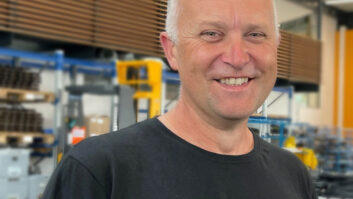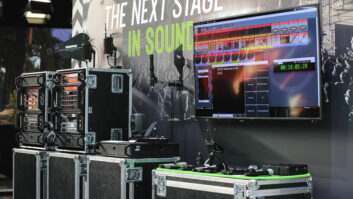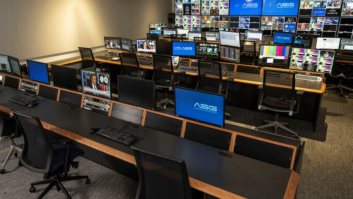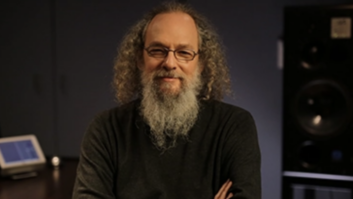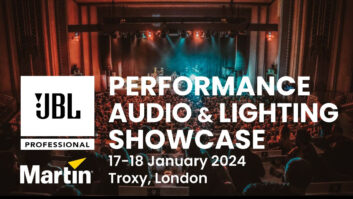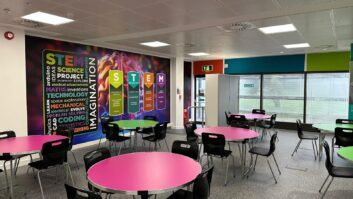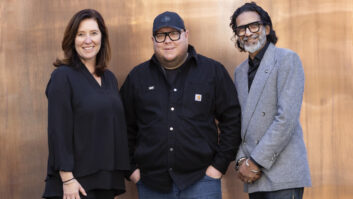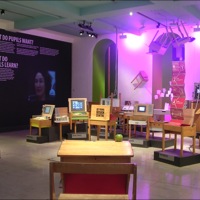
Designs for learning: An innovative exhibition is helping bring to life innovations in school design – by giving schoolchildren the opportunity to get their ideas across. Simon Duff reports
What would happen if pupils were put in charge of improving their schools? The Sorrell Foundation’s Joinedupdesignforschools is a UK government-backed initiative that does just that. It explores how good design can improve the quality of life in schools by listening to the people who use them most: the pupils. They become the clients, deciding what needs improving in their own schools and then briefing the designers they are matched with. Resulting projects that have been realised include bold colour schemes and innovative use of light to improve atmospheres, indoor tree houses, internet access in canteens and ways to improve sustainability.
Some of these schemes are outlined at the What’s Next for Schools? exhibition at the Sorrell Foundation Young Design Centre in London’s Somerset House. Opened in 2007, it was created in partnership with museum and interior designers Casson Mann. Audiovisual design came from COMS, with building equipment installation and maintenance by E-Mech Entertainment Engineering.
What’s Next for Schools? uses a variety of audiovisual elements, as well as 16 recycled school desks – the type with the folding lid and inkwell that many will remember from their school days. These contain specially fitted Trident LCD monitors, showing films and interactive elements such as a computer game. Unusual features include a modified toilet seat, used to demonstrate a project designed to improve one school’s toilet facilities.
Robust aluminum Blackbox AV audio handsets, using small RDL FP-PA20 amplifiers, both confine the amount of noise in the exhibition space and further help to engage visitors. A trolley-mounted LCD unit with a JBL Control 1 speaker is also provided to give a more mobile option for any presentations and guest appearances in the exhibition space.
Building restrictions
Somerset House is a spectacular neo-classical building in the heart of London, sitting between the Strand and the River Thames. Its listed status makes it a challenge for any technical installation. Jasha Stacey, project engineer at COMS, comments on the nature of the project: “The building’s status meant we were only allowed simple screw fixings into the walls and we were not allowed to penetrate the floor in any way.
“There was also no opportunity to install any cabling to other parts of the building, which meant we could not use racked equipment. The only cabling we could bring into the exhibition space was power. As a result all the hardware is installed locally, which meant being able to fit it all inside the school desks that made up the structure of the exhibition. We had to find very compact solid-state media playback hardware as well as compact amplifiers.”
When it came to equipment installation – which took about two weeks – E-Mech was a natural choice for COMS. James Eade, managing director of E-Mech, comments: “We got involved with the project pretty early on – it was clear that Sorrell would need the installation doing for them and, knowing the pedigree of E-Mech and that our work would come with a third-party insured six-year warranty and bond as standard, COMS had no hesitation in proposing us at the outset.”
At the heart of the installation are 16 MedeaWiz DV68 Media Players, which play a variety of media types from a compact flash card. They are used as stand-alone devices positioned under the school desks and serving content for a Sanyo PLC-XP51 projector. Two LinTL solid-state PCs are used for the school-based computer game, and take up a small footprint. Like the media players they are all self-contained under the school desks and boot up with the required programs, running on Windows XP. The audiovisual runs every day with an automated timed power up and down control for the exhibition area. Sorrell oversees the day-to-day running, while E-Mech is responsible for any maintenance issues.
In the right direction
Highlights in the audio installation include two self-powered Audionation HSS450 directional speakers, used for the sound element in the main wall projection area. Nic Bowker, senior project engineer at E-Mech, comments on how they are used: “The initial brief was that people would sit down on a bench and listen and watch. The close proximity of other exhibits in the room meant we couldn’t just have ordinary cabinet speakers firing sound down into the exhibition space and so these directional ones were chosen.
“Good directional speakers are very hard to come by – especially those with any half-decent output level – and the HSS450s provide just enough SPL at the listening position. Their high-precision targeting significantly minimises the levels of noise pollution.”
Working together
With their complementary skill sets, E-Mech and COMS have a long history of working together, and What’s Next for Schools? was a prime example. The audiovisual element makes the exhibition interactive, and with software-based exhibits it can be updated in the future. Considering that the number of very hands-on schoolchildren that have visited the exhibition since it opened, it has lasted incredibly well and still looks very fresh.
Alongside current installation projects – which include a sports ground audio installation, interactive architectural lighting for a sculpture in Sheffield and a new school drama hall – E-Mech is also gaining headway in the consultancy market.
“We are getting asked more frequently to carry out surveys and provide reports on audio and lighting installations done by others, often to identify remedial works or other shortcomings,” comments Eade. “We’re looking to develop this side of the business; such services are commonplace in the rest of the contracting industry and, given the complex nature of many audio, lighting and audiovisual installs, it will undoubtedly be a good selling point, for installation contractors especially, to provide third-party assurance that they have done a good job.”
www.audionation-uk.com
www.blackbox.com
www.cassonmann.co.uk
www.coms.uk.com
www.eade.uk.com
www.jblpro.com
www.medeawiz.com
www.rdlnet.com
www.sanyo-lcdp.com
www.somersethouse.org.uk
www.thesorrellfoundation.com
www.trident-uk.co.uk
